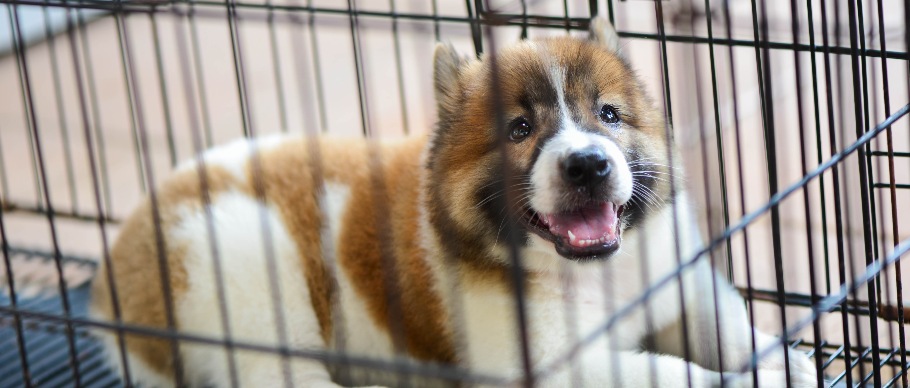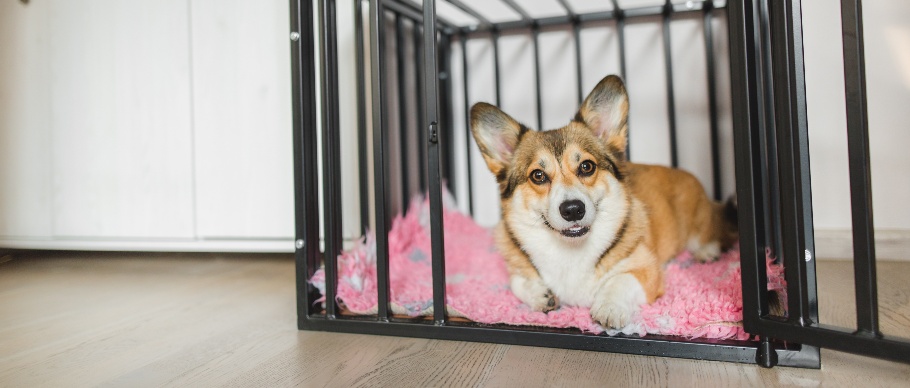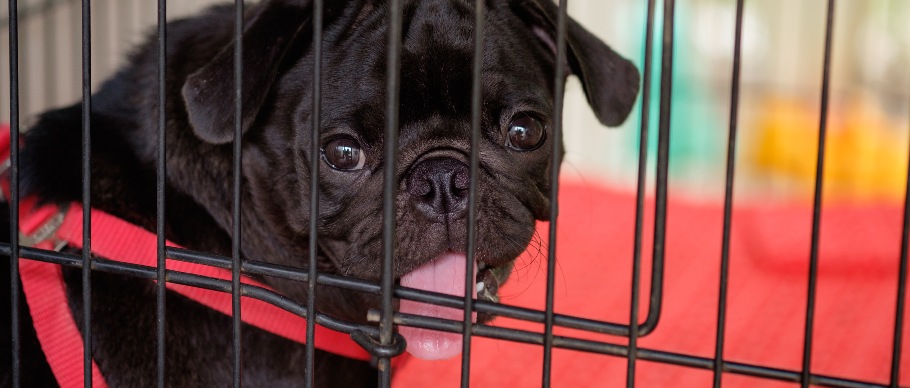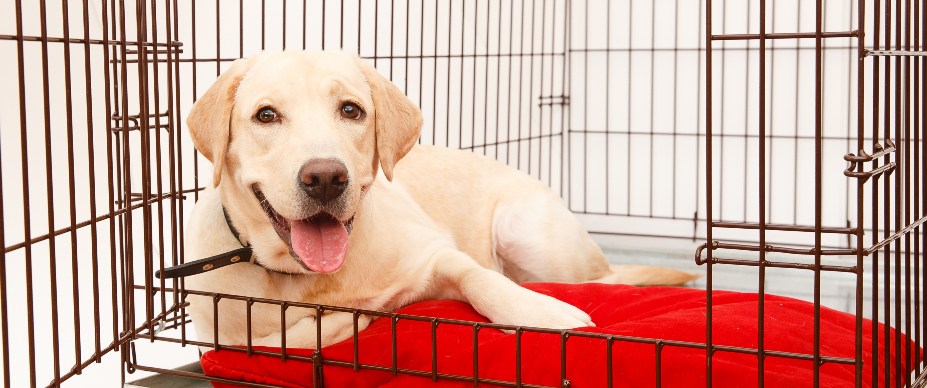Your Comprehensive Guide for How to Crate Train a Dog
Whether you have a puppy or an older furry friend, crate training a dog is one of the best ways to ensure they have a comfortable, secure location to enter and feel at ease. From keeping your dog safe when you cannot supervise them to helping with the potty-training process, crates come in handy for a wide variety of situations.
Read on to learn how to crate train a dog and more!
What Is Crate Training?
Dog crate training is a method for teaching your dog to accept their crate as a positive, secure space that’s all their own. Whether you just welcomed home a young puppy or you’re interested in crate training an adult dog, you can expect a similar process: introducing the crate, acclimating your dog to the crate, and developing a routine for crate time.
Once you’ve mastered the training process, there are plenty of scenarios where you and your dog will embrace the crate.
The Benefits of Crate Training
One of the most significant benefits of crate training is assisting in dog potty training. Instinctually, most dogs will not soil their beds. Therefore, if your dog uses a crate for sleeping and lounging, they will learn to associate “go” time with appropriate potty spots only.
In addition to potty training, providing your dog their own special space can help curb overexcitement. On occasions when you need to restrict your dog from what’s going on around them, keeping them in a crate means you don’t have to move them alone into a solitary room. This keeps your pup in the loop and helps manage dog loneliness. Plus, the more comfortable your dog is overall, the less likely they are to engage in destructive behavior.
Selecting the Right Crate for Your Dog

While there are many types of dog crates to choose from, picking the right one is essential in providing your dog a safe, cozy spot.
Dog Crate Size
To determine which crate size is best for your dog, measure your furry friend’s length from their nose to the base of their tail and then add two to four inches. Ideally, your pooch should be able to stand, stretch, turn around, and lie down in a crate without feeling cramped. Also, make sure your dog’s weight does not exceed the crate’s weight limit.
If your dog is still growing, you can purchase an adult-sized crate and use divider panels to adjust the size. If the crate is too large and you do not use dividers, your dog may sleep in one corner and go to the bathroom in another. Dividers are a great money-saving option that allows for crate versatility.
Dog Crate Material
For crate training purposes, you should consider a wire or plastic crate. Other types of dog crates, such as those made from fabric or wood, are not recommended for early crate trainees because they are more easily destructible.
The openness of wire dog crates allows for high airflow and visibility. If desired, wire crates can be covered with a blanket for more privacy and shade, which makes some dogs feel more secure. These sturdy crates can’t be used to carry your dog, but they usually fold flat for storage. Plastic dog crates, on the other hand, are lightweight and can be used as carriers. They have lower airflow and visibility, making for a darker space that resembles a den.
How to Crate Train a Dog

When it comes to crate training a dog, persistence goes a long way. Follow these steps and your dog will be using their crate to relax or rest their eyes in no time!
Step #1: Introduce Your Dog to the Crate
To begin training, set up the crate and let your dog look inside. If they need some encouragement to enter, try placing their favorite toy or a tasty chew treat in the crate. As soon as they go inside, offer your furry friend plenty of praise. Positive reinforcement will teach your dog to associate the crate with rewards and good feelings.
Step #2: Try Closing the Crate Door
While you may be tempted to close the door to see how your dog responds, wait until they have had a chance to get acquainted with their new space. Once your pooch seems at ease—entering and exiting willingly—start closing the door for short periods of time. In the beginning, only leave the door shut for a minute or so. If they bark or whine, ignore this behavior and wait for them to stop before unlatching the door. By ignoring unwanted behavior, you will gradually teach your dog that only good behavior releases them from the crate.
Some pups take longer than others to acclimate to a crate. It can be difficult to ignore the whines and howls that may come with crate training a dog, but it’s important to remain persistent! Contrarily, you shouldn’t use the crate as a form of punishment; this will only hinder training efforts.
Step #3: Practice Leaving Your Dog in the Crate
Once your dog remains calm inside their crate with the door closed for several minutes, try leaving the room for another few minutes. Although they may protest in the beginning, wait until the fussing stops before returning. Repeat this exercise, gradually increasing the amount of time you are out of your best friend’s sight.
How Long Can a Dog Stay in a Crate?

You’ll be happy to know that once your dog is crate trained, they should remain content in their crate for four to six hours! If you intend to leave your dog in a crate while at work, stop home on your lunch break to let your pooch stretch their legs or ask a friend to let them out.
Keeping your dog in their crate for more extended periods may create problems rather than solve them. Your dog requires plenty of exercise, family time, and affection—whether you use a crate or not. We recommend speaking to your veterinarian if you are interested in a more specific crate schedule tailored to your dog’s needs.
Crate training is a fantastic way to teach your dog how to properly handle stress and feel more confident on their own. While figuring out how to crate train a dog can be challenging at first, stay positive and don’t give up. Soon enough, your dog will look forward to using their crate!
Welcoming home a new pup? Learn how to crate train your puppy!







